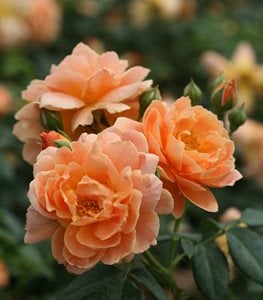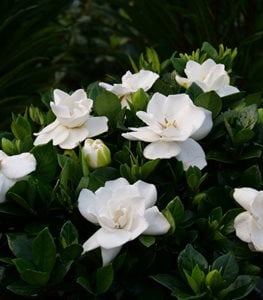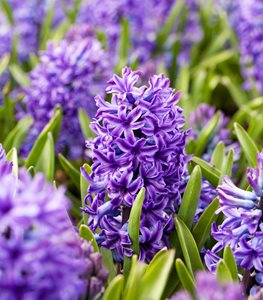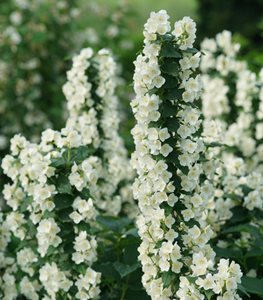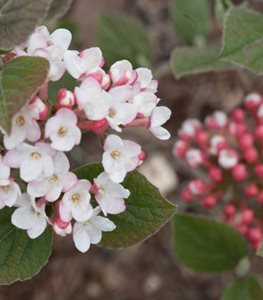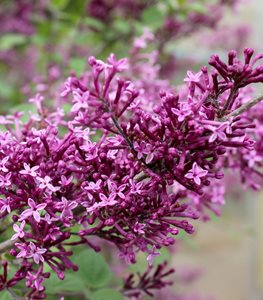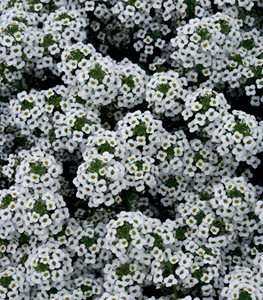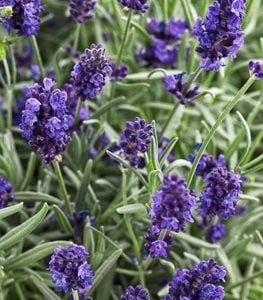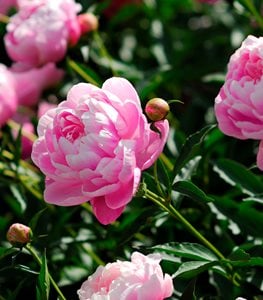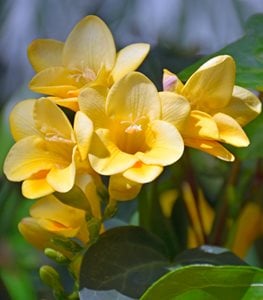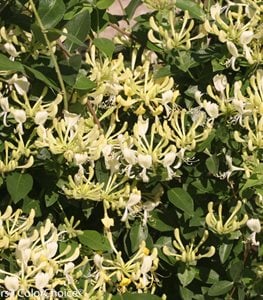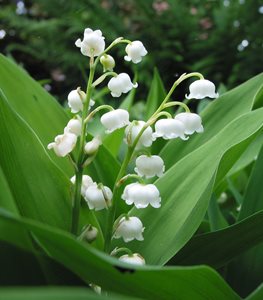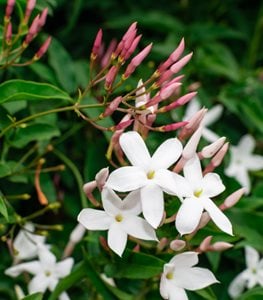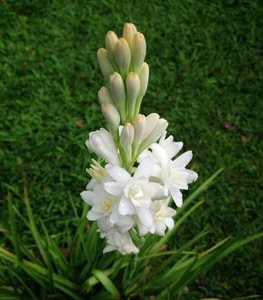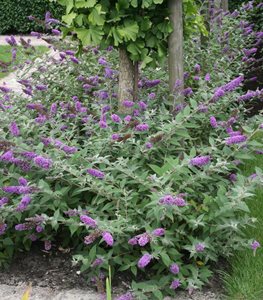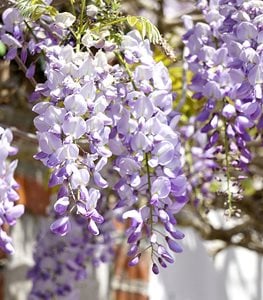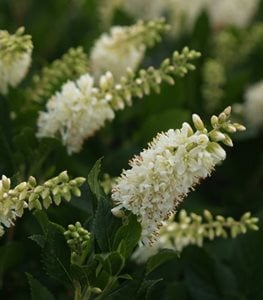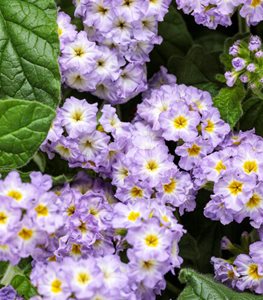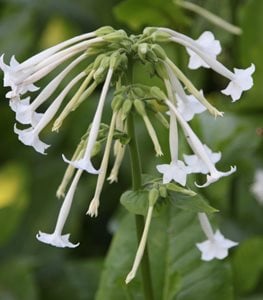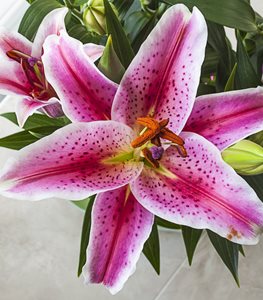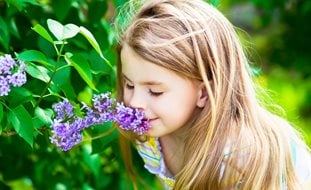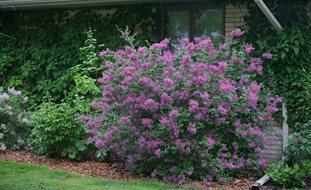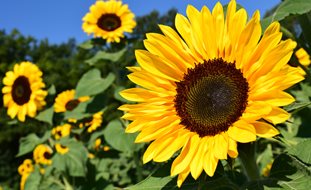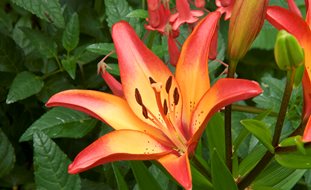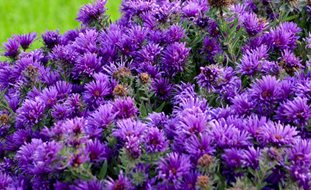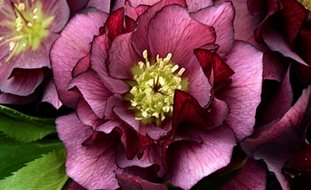20 Fragrant Flowering Plants for Your Garden
Turn your garden into a perfumed paradise with these sweetly scented annuals, perennials, shrubs, and vines.I confess, that like many gardeners, I often focus on the visual beauty of a plant when choosing what to put in my flower beds and containers rather than the fragrance of its blooms. It’s easy to forget how important fragrance can be to the overall enjoyment of a garden, not only by evoking pleasant memories of familiar scents from our past but also by allowing us to experience the garden even with our eyes closed.
As a bonus, flowers that smell good to us smell even better to bees and butterflies. Like aromas wafting from a kitchen, these floral scents beckon pollinators to come visit our gardens for a wonderful feast.
20 FRAGRANT FLOWERING PLANTS
ROSE (Rosa spp.)
Plant type: Shrub
Zones: Typically 4-11, but can vary
Exposure: Full sun to part shade
Height: 1 to 12 feet tall, depending on variety
Bloom time: Spring through summer
Each rose has its own signature scent, ranging from light and citrusy to strong and musky. But beware: Some roses are bred for appearance rather than fragrance and have little scent at all. If possible, read the plant tag or do a sniff test before buying. The American Rose Society
Read more about how to grow and care for roses.
Pictured: At Last® rose from Proven Winners
GARDENIA (Gardenia spp.)
Plant type: Shrub
Zones: 8-11
Exposure: Light shade
Height: 3 to 8 feet tall, depending on variety
Bloom time: May through June, with some varieties blooming into autumn
In the languid warmth of late spring and early summer, many gardens in the South are filled with the heavenly scent of gardenias in bloom. But if you live in a zone where gardenias are not winter hardy, you can use them as fragrant summer container plants on patios and front porches. Because gardenias are mainly pollinated by moths, their fragrance becomes even more intense at night, when most moths are active. That heady nighttime perfume, along with the luminous white flowers, make gardenias a magical addition to a moon garden.
Read more about how to grow and care for gardenias.
Pictured: Steady as She Goes® gardenia from Proven Winners
HYACINTH (Hyacinthus orientalis)
Plant type: Bulb
Zones: 3-9
Exposure: Full sun to part shade
Height: 6 to 12 inches tall
Bloom time: Early to mid-spring
Few early spring flowers are as abundantly fragrant and showy as hyacinths. Plant the bulbs near walkways, entries, or patios to better enjoy their sweet honey-like scent. Or, force the bulbs in pots for fragrant indoor blooms. Not only are hyacinths a good early nectar source for bees and butterflies, they are also great deer repellents because of their strong-smelling flowers.
Read more about how to grow and care for hyacinth bulbs.
MOCK ORANGE (Philadelphus spp.)
Plant type: Shrub
Zones: 4-8
Exposure: Full sun or partial shade
Height: 3 to 10 feet tall
Bloom time: Late spring to early summer
This old-fashioned garden shrub is prized for the citrusy scent of its frilly white flowers, which is reminiscent of orange blossoms. The sweetly fragrant blooms last for weeks and are also delightful in cut flower bouquets, perfuming the air without being overpowering.
Read more about how to grow mock orange shrubs.
Pictured: Illuminati Tower® mock orange from Proven Winners
KOREAN SPICE VIBURNUM (Viburnum carlesii)
Plant type: Shrub
Zones: 4-8
Exposure: Partial to full sun
Height: 3 to 10 feet tall
Bloom time: March to April
This showy shrub produces dark pink buds that open to globe-like clusters of tiny white flowers. But the main attraction is the delicious fragrance, a clove-like scent similar to spice cake. Plant near patios or walkways where the blossoms can be admired, and inhaled, at close range.
Read more about how to grow viburnum shrubs.
Pictured: Spice Girl® viburnum from Proven Winners
LILAC (Syringa vulgaris)
Plant type: Shrub
Zones: 4-8
Exposure: Full sun
Height: 12 to 15 feet tall
Bloom time: Late May
Of all the fragrant flowering shrubs, lilacs are perhaps the most iconic. The heavily-scented flowers are the trademark scent of spring and can’t help but trigger memories of warm, sunny days in May. Although most lilacs bloom for only a few short weeks, that knock-your-socks-off fragrance is worth the anticipation. Or, plant one of the repeat blooming lilac varieties that will flower again in mid to late summer.
Read more about how to grow lilacs.
Pictured: Bloomerang® Dark Purple lilac from Proven Winners
SWEET ALYSSUM (Lobularia maritima and hybrids)
Plant type: Usually grown as an annual
Zones: 9-11
Exposure: Full sun to partial shade
Height: 4 to 10 inches tall
Bloom time: Spring until the first hard frost
It’s hard to believe that a member of the mustard family can have such sweet-smelling flowers, like the scent of honey on warm toast. The dainty blooms, which come in shades of white, pink, rose, and purple, will perfume your garden all summer long and even into fall. Also plant a few in containers and hanging baskets to place on a deck, balcony, or patio.
Read more about how to grow sweet alyssum.
Pictured: Snow Princess® sweet alyssum from Proven Winners
LAVENDER (Lavandula angustifolia)
Plant type: Perennial
Zones: 5-8
Exposure: Full sun
Height: 2 to 3 feet tall
Bloom time: June to August
Breathing in the scent of lavender while strolling through the garden on a warm summer day is one of life’s greatest pleasures. There are several species of lavender, but English lavender and its hybrids are known for their strong fragrance. Use lavender to create aromatic hedges or borders along fences and garden walls, or grow on patios and porches as a natural insect repellent.
Read more about how to grow lavender.
Pictured: Sweet Romance® lavender from Proven Winners
PEONY (Paeonia lactiflora)
Plant type: Perennial
Zones: 3-8
Exposure: Full sun
Height: 2 to 3 feet tall
Bloom time: May to June
Like roses, some peonies smell stronger than others and the fragrance can range from light and citrusy to sweet and spicy. Typically, double white and pink peonies are the most fragrant. When shopping for peonies, look for plants that are early, midseason, or late blooming. Choosing a few from each category will allow you to enjoy the fragrant blooms from midspring through early summer.
Read more about how to grow peonies.
FREESIA (Freesia spp.)
Plant type: Bulb
Zones: 9-10
Exposure: Full sun
Height: 1 to 2 feet tall
Bloom time: Usually 10 to 12 weeks after planting
With their delicate jewel-toned flowers and a fruity scent reminiscent of fresh strawberries, freesias are a must for the cutting garden so you can enjoy their heady fragrance in spring and summer bouquets. The bulbs are also easy to force indoors for long-lasting winter blooms. Although you can choose from a rainbow of colors, the creamy white blooms of Freesia alba are often considered to be the most fragrant.
Read more about how to grow freesia plants.
HONEYSUCKLE (Lonicera spp.)
Plant type: Vining shrub
Zones: 4-9
Exposure: Partial to full sun
Height: 5 to 20 feet tall
Bloom time: May through mid-summer
With a sweet and citrusy scent like pink lemonade, this beautiful flowering vine is the fragrance of summertime. Allow it to twine around a trellis or over an arched gateway -- anywhere that gets you closer to the delicious fragrance. The tubular flowers, with their long pollen-rich stamens, are also a favorite of bees, butterflies, and hummingbirds. Note: Bush or shrub types of honeysuckle are considered invasive in many parts of the U.S.
Read more about growing honeysuckle.
Pictured: 'Scentsation' honeysuckle from Proven Winners
LILY-OF-THE-VALLEY (Convallaria majalis)
Plant type: Perennial ground cover
Zones: 3-7
Exposure: Partial to full shade
Height: 6 to 18 inches tall
Bloom time: Mid to late spring
An intoxicating scent that fills the spring air with its sweet perfume is reason alone to grow this resilient groundcover. But you’ll also fall in love with the captivating white flowers, which hang like fairy bells above rich emerald-green foliage. Because lily-of-the-valley likes heavy shade, it will thrive and bloom even when planted under deciduous trees and shrubs and along north-facing walls.
Read more about growing lily-of-the-valley plants.
JASMINE (Jasminum spp.)
Plant type: Vining shrub
Zones: 7-10
Exposure: Full sun to partial shade
Height: Can reach 20 to 30 feet
Bloom time: Early to late summer
The lovely star-shaped flowers of this sweetly scented vine are so fragrant that one plant can perfume an entire garden. The blooms will also continue for months on end, especially if the stems are pruned back after the first flush of flowers. Because jasmine vines grow rapidly, they are ideal for covering a garden wall or fence. Or you can shear them back to create a fragrant hedge.
TUBEROSE (Polianthes tuberosa)
Plant type: Bulb
Zones: 7-10
Exposure: Full sun
Height: Up to 4 feet
Bloom time: July to September
This summer-blooming bulb is a favorite in cut flower arrangements because its tall spikes of creamy white blooms permeate the air with an irresistible sugary-sweet fragrance. Because of the thick stems, the cut flowers will last for weeks in a vase before the fragrance wanes. Numerous cultivars are available, including varieties with double flowers and pink or yellow blooms. These tender bulbs are not frost-tolerant, so if you live in a colder climate, be sure to dig up the bulbs at the end of the season and store them for the winter.
BUTTERFLY BUSH (Buddleia davidii)
Plant type: Shrub
Zones: 5-9
Exposure: Full sun
Height: 18 inches to 7 feet tall depending on variety
Bloom time: Summer until first frost
Sometimes called summer lilac (non-invasive varieties), this compact shrub’s honey-scented flowers are magnets for butterflies, bees, and hummingbirds. Butterfly bush has a reputation for reseeding aggressively, so choosse a newer cultivar that is non-invasive and won’t overrun your garden. Choose a planting site near patios, gathering areas, or windows where you can enjoy the scent and the parade of visiting pollinators.
Read more about growing butterfly bushes.
Pictured: Lo & Behold 'Blue Chip' butterfly bush (non-invasive) from Proven Winners
WISTERIA (Wisteria spp.)
Plant type: Vine
Zones: 3-9
Exposure: Full sun
Height: Climbs 10 to 30 feet
Bloom time: Spring into summer
There is no sight more breathtaking than a wisteria in full bloom, with its long streamers of fragrant purple, white or pink flowers cascading from every twig. This vigorous climber has the greatest impact when trained to grow on pergolas, arbors, and other overhead supports so the flower clusters can hang freely, creating a stunning floral canopy. Note: Chinese (W. sinensis) and Japanese (W. floribunda) wisterias are considered invasive in some areas (click the links to see where).
Read more about growing wisteria vine.
SUMMERSWEET (Clethra alnifolia)
Plant type: Shrub
Zones: 4-9
Exposure: Full sun to part shade
Height: 3 to 8 feet tall
Bloom time: Mid to late summer
Summersweet is one of the few fragrant shrubs that blooms at the height of summer, perfuming the air for weeks with a seductive clove-like fragrance. Enhancing the prolific floral display are lustrous green leaves that turn brilliant golden-yellow in fall. Adapts to a variety of growing conditions, including shade, soggy soil, and salty air.
Read more about growing summersweet bush.
Pictured: Sugartina® 'Crystalina' summersweet from Proven Winners
HELIOTROPE (Heliotropium arborescens)
Plant type: Usually grown as an annual
Zones: 9-11
Exposure: Full sun
Height: 12 to 18 inches tall
Bloom time: From planting until frost
Heliotrope’s large clusters of vanilla-scented flowers will bloom vigorously all summer long especially if you pinch back the faded blossoms. The scent is most noticeable on warm evenings, so grow plants in a container or in flowerbeds near a seating area to enjoy the sweet fragrance. Helio is the Greek word for “sun,” so give this plant plenty of sunshine to keep it thriving and blooming.
Read more about growing heliotrope.
Pictured: Augusta™ Lavender heliotrope from Proven Winners
FLOWERING TOBACCO (Nicotiana sylvestris)
Plant type: Usually grown as an annual
Zones: 10-11
Exposure: Full sun to part shade
Height: 3 to 5 feet tall
Bloom time: June until frost
Also called “shooting stars” because of its long, tubular white flowers, flowering tobacco is intensely fragrant, especially in the evening, and visible even after dusk. The flower clusters dangle from tall stems, adding to the shooting start effect. Plant in a moon garden, a cottage garden, or along walkways so that anyone strolling by can enjoy the sweet, jasmine-like scent. It also makes a great thriller in mixed container plantings (see this scented container combination).
STARGAZER LILY (Lilium orientalis 'Stargazer')
Plant type: Bulb
Zones: 4-9
Exposure: Full sun to part shade
Height: 3 to 4 feet tall
Bloom time: Mid to late summer
Although most lilies are wonderfully fragrant, the scent of this oriental lily hybrid is especially swoon-worthy. 'Stargazer' is also one of the easiest lilies to grow, despite the exotic appearance of its huge pink and red-spotted flowers. A gorgeous addition to cut flower arrangements, but use sparingly because the intense fragrance can be overpowering indoors.
Read more about growing lilies.
TIPS FOR DESIGNING A FRAGRANCE-FILLED GARDEN
- Keep your garden smelling heavenly from early spring through late fall by including a variety of plants that bloom in different seasons.
- Spread the plants throughout your garden so the different scents are easily discernible.
- Take a stroll through your garden at different times of day. Some flowers are more fragrant at dusk, after a rain shower, or during the intense heat of a summer afternoon.
